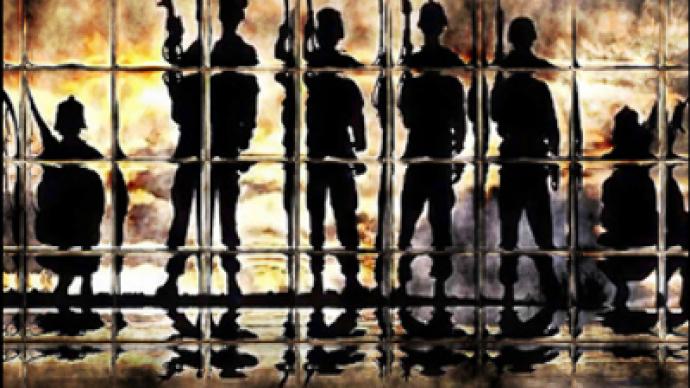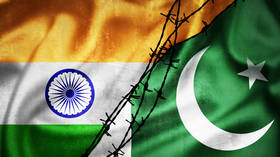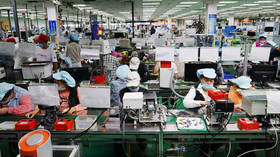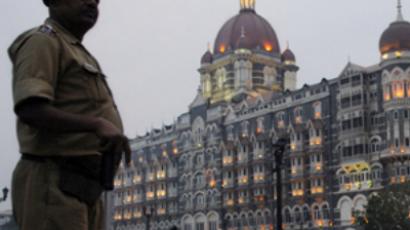The war atrocity meter

Researchers have recently suggested a method of measuring war atrocities to tell ‘clean’ sides from the ‘dirty’ ones.
There is no disagreement over the statement that war is worse than peace. The loss of lives, the misery and pain that any armed conflict brings make most cultures consider war as evil, but is there a scientific way to say which evil is lesser and which is greater?
Madelyn Hsiao-Rei Hicks of King's College in London and Michael Spagat of Royal Holloway College in Egham, UK, say there is. They have proposed what they call the Dirty War Index (DWI).
The math behind it is simple. They list atrocities that can be considered inappropriate or ‘dirty’ for an armed conflict, such as: civilian killings, rapes, torture, killings of children and elderly people, or the use of indiscriminate weapons like cluster bombs. The number of such cases is divided by the total number of respective outcomes – deaths, face-to-face encounters between combatants and non-combatants etc. The result is then multiplied by 100 for the sake of visualisation.
The index is intended to measure how ‘clean’ sides to the conflict behave and to evaluate the general recklessness of the war. The higher the score – the ‘dirtier’ the war. Combined with absolute numbers, the authors say, the DWI may be used for policymaking by international organisations.
However, the prime target of the measurement is public opinion. Check which group or groups kill civilians and torture prisoners and kidnap for money, call them dirty and dishonourable out loud waving your scientific proof, and they lose support, face, and the urge to commit war crimes. At least that’s the logic behind the research.
Aside from the moral and legal issues with distinguishing ‘dirty’ cases from ‘clean’ ones, the method is flawed on several levels. The first is that the calculation of the DWI requires correct and complete statistics on the conflict, which is usually not available. Even telling combatants from non-combatants is difficult in modern conflicts. The fresh example is the raid by the U.S. troops from Iraq to bordering Syria in late October. The U.S. say the people killed had links with Al-Qaeda (and thus were legitimate targets for the attack). Syria said they were civilians.
A more vivid example is the recent war in South Ossetia. The number of reported civilian casualties by the Ossetian side was around 2,000. Georgia argued that it was shooting at armed militants who had been shelling their positions. There is disagreement on the issue, which is unlikely to be resolved any time soon. The same applies to, say, Palestinians, who let militants fire Qassam rockets from their backyards for a small fee, but then fell victim to Israeli retaliation air strikes.
This problem arises in the less recent conflicts as well. There are several Soviet partisan fighters who faced prosecution in the new Baltic countries over the alleged killing of civilian populations during the World War II. Were the people killed half a century ago Nazi collaborators and legitimate targets for the pro-Soviet guerrilla or not?
More exotic data like the statistics on the deaths caused by cluster munitions or the number of cases where combatants disguise themselves as civilians – both on the list of ‘dirty’ outcomes suggested by Hicks and Spagat – may be even harder to obtain for a certain conflict.
The DWI reflects local conditions of the conflict, like demographic structure (a high proportion of children in African countries means higher DWI for children deaths in African conflicts) or local traditions (in a country where having a weapon is a must for an adult man will have more cases of killed civilians erroneously taken for combatants than a country where weapon ownership is strictly controlled). Hicks and Spagat argue that warring parties must take local conditions in consideration when engaging in a conflict and that there is no excuse for killing children – quite true. Nevertheless, this makes the use of the DWI in comparing different wars problematic at best – sorry, there is no universal atrocity meter, despite the headline.
The biggest flaw of the index is that it is intended as a propaganda tool for a highly politicised area of military conflict. “Exposure of atrocities through DWIs can put reputation, legitimacy, future resources, threat of retaliation, or power itself at stake,” the article says, explaining how the index can be a deterrent for military leaders. That would only work with those who take more value in scientific proof than in, say, religious dogma. Science may have much authority for a member of the Western civilisation, but for an African tribesman some rubbish figure published by an unknown foreigner will be nothing compared to the words of his war chief and the blood feud dating a century.
As a statistical instrument, the DWI may have its limited use for policymakers in telling ‘bad guys’ from the ‘even worse guys’. If it makes its way into the area of propaganda war, as Hicks and Spagat say, it will instantly become subject to manipulation and dirty tricks. Some groups may be even more compelled to use human shields and false flag operations to stuff their opponents’ DWI rating and discredit them.
The media may be fond of indexes. ‘Country A dropped 30 places on the Global Good Guys Index and is now in the company of such countries with the notoriously low records as C and D’ makes a good story. Inventing one with a questionable accuracy and based on a sensitive and provocative material is not necessary. War is evil. Period.
Alexandre Antonov, RT














